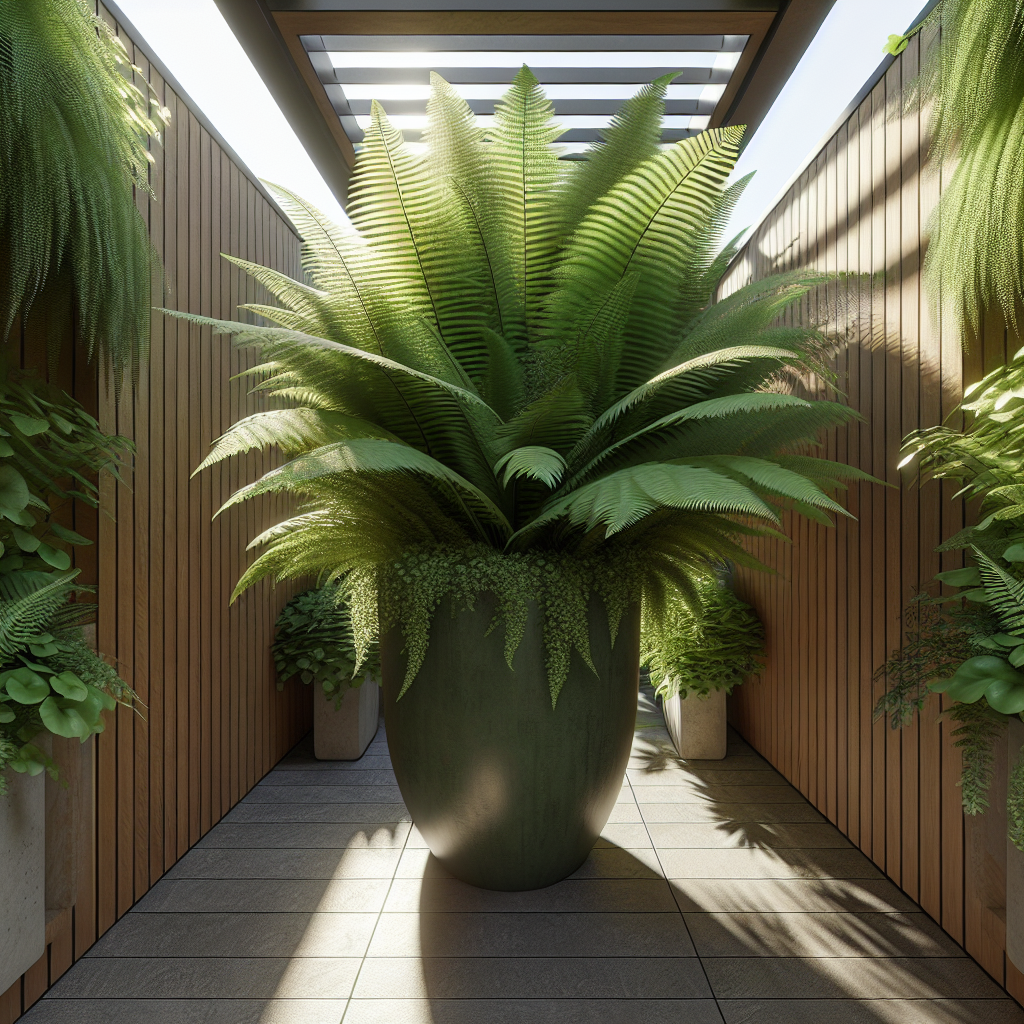Ferns are a beloved and versatile plant that can add beauty and texture to any garden. One of the most popular ways to incorporate ferns into your outdoor space is by planting them in containers. Container gardens offer a great way to maximize the impact of ferns, allowing you to easily move them around to different locations and create stunning displays. In this article, we will explore some tips and tricks for maximizing ferns in container gardens.
Choose the Right Container
When it comes to choosing a container for your ferns, there are a few important factors to consider. First and foremost, you will want to make sure that the container is large enough to accommodate the size of your ferns. Ferns typically have shallow root systems, so a wide and shallow container is ideal.
In addition to size, you will also want to consider the material of the container. Terra cotta pots are a popular choice for growing ferns as they provide good drainage and allow for airflow around the roots. However, plastic or resin containers are also suitable options as long as they have drainage holes at the bottom.
Selecting the Right Ferns
There are many different types of ferns available on the market, each with its own unique characteristics and care requirements. When choosing ferns for your container garden, consider factors such as sun exposure, humidity levels, and soil moisture.
Some popular choices for container-grown ferns include maidenhair fern (Adiantum), birds nest fern (Asplenium), and Boston fern (Nephrolepis exaltata). These varieties are well-suited for containers and can thrive in a wide range of growing conditions.
Planting Your Ferns
Once you have selected your container and chosen your ferns, it’s time to plant them! To ensure successful growth, it’s important to start with high-quality potting mix that is well-draining yet retains moisture. Fill your container about halfway full with potting mix before placing your ferns in their new home.
When planting your ferns, be sure to leave enough space between each plant so that they have room to grow. It’s also a good idea to incorporate some slow-release fertilizer into the soil mix to provide essential nutrients for healthy growth.
Caring for Your Ferns
Proper care is essential for maximizing the impact of your ferns in a container garden. One of the most important aspects of caring for ferns is providing adequate water. While it’s important not to overwater your plants, you will want to ensure that they receive enough moisture to prevent wilting or drying out.
In addition to watering, it’s also important to regularly fertilize your ferns throughout the growing season. A water-soluble fertilizer can be applied every 4-6 weeks during the spring and summer months when plants are actively growing.
Another key aspect of caring for container-grown ferns is providing proper lighting conditions. Most varieties prefer filtered sunlight or partial shade, although some types may tolerate full shade or bright indirect light. Be sure to monitor how much sunlight your plants receive throughout the day and adjust their placement accordingly.
Pest Control
Unfortunately, like all plants, ferns can fall victim to pests such as scale insects or spider mites. To prevent infestations from occurring in your container garden, it’s important to regularly inspect your plants for signs of pests such as yellowing leaves or webbing.
If you do notice any pests on your plants, there are several natural methods you can use to control them without resorting to harsh chemicals. For example, spraying plants with neem oil or insecticidal soap can help deter pests without harming beneficial insects or pollinators.
Seasonal Considerations
As we head into fall and winter months, it’s important to take steps to protect your container-grown ferns from cold temperatures and harsh weather conditions. If you live in an area where temperatures drop below freezing during winter months, consider bringing your containers indoors or placing them in a protected area such as a covered porch or garage.
To protect plants from frost damage when temperatures dip below freezing overnight, cover containers with frost cloth or burlap fabric before nightfall. This extra layer of protection can help insulate plants from extreme temperatures and prevent damage from ice crystals forming on leaves.
In conclusion,
By following these tips and tricks for maximizing ferns in container gardens, you can create stunning displays that will thrive throughout the growing season . Whether you’re looking add beauty texture garden , planting self-contained environment allows flexibility creativity while still achieving maximum impact . Remember choose right suitable plant care needs provide proper lighting regular maintenance pest control . With proper care attention ,your potted flourish long-lasting beauty enjoyment .













